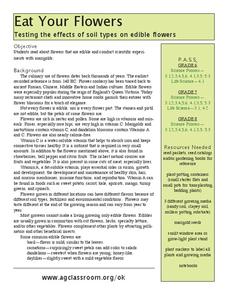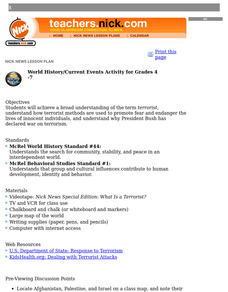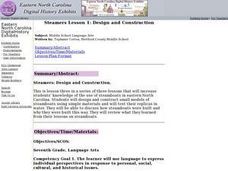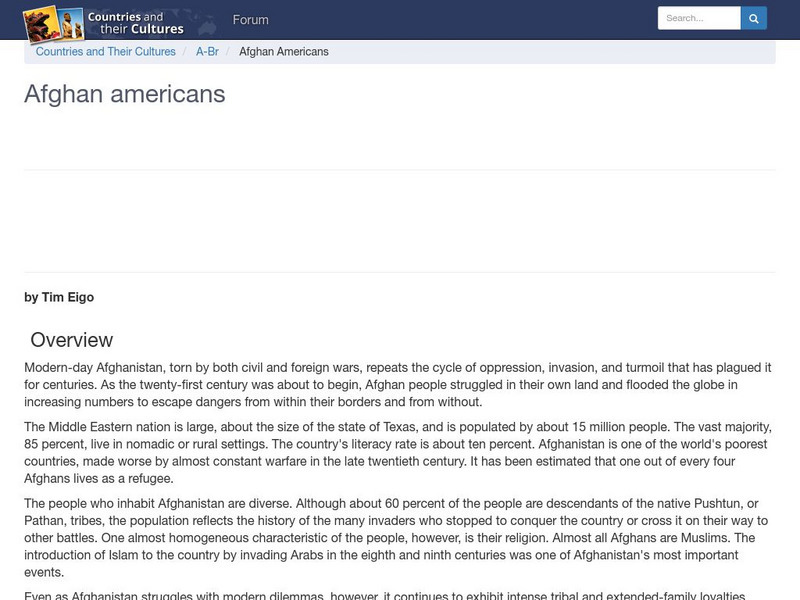Curated OER
Torn From Each Other's Arms
Learners explore the transformations that the institution of slavery underwent in the English Colonies. They study the impact of slavery on black families.
Curated OER
Eat Your Flowers
Students grow flowers in different soil mediums to determine the effect on flavor. In this investigative lesson students study flowers, plant them and taste them to see how they differ in different potting soils.
Curated OER
What the Empire Lost: The Ottoman Empire
In this Ottoman Empire worksheet, students read a 1-page selection about the decline of the empire, examine the provided map on the topic, and then respond to 5 short answer questions about the information presented.
Curated OER
Stratification
Students study the process of stratification and seed dormancy. In this germination lesson students prepare a medium in which to grow seeds.
Curated OER
World History/Current Events Activity
Students define the term terrorist, and examine how terrorist methods are used to promote fear and endanger the lives of innocent individuals. They analyze why President Bush has declared war on terrorism, and write essays on terrorism.
Curated OER
Steamers Lesson 1: Background Information
Students discover the use of steamboats in North Carolina. After reading background information, they take notes on their reading and participate in a class discussion. They complete a KWL chart and share what they have gathered in small...
Curated OER
Steamers Lesson 1: Design and Construction
Students examine the use of steamboats in North Carolina. In groups, they design and contruct their own small models of steamboats using simple materials. They test their models in water and share how they were built and why. They...
Curated OER
Slavery of Africans in the Americas: Resistance to Enslavement
Students explore the many ways African and African-American slaves resisted their enslavement in the Americas with special emphasis on the slave songs and maroon societies of slaves.
Countries and Their Cultures
Countries and Their Cultures: Luba of Shaba
The patrilineal Luba of Shaba differ in their descent system from the Eastern Luba by their culture and language, they are distinct from the Western Luba. Most live in southern Zaire. The Luba practice slash-and-burn agriculture; fields...
Countries and Their Cultures
Countries and Their Cultures: Shilluk
The Shilluk are the most northern Nilotic-speaking people in modern Africa. Shilluk country covers approximately 320 kilometers on the west bank of the White Nile. Most of Shilluk country is open savanna and free from the annual floods...
Countries and Their Cultures
Countries and Their Cultures: Bemba
The Bemba are the largest ethnic group in the Northern Province of Zambia. Seventeen or eighteen ethnic groups in this general area of Zambia comprise the Bemba-speaking peoples, and they form with the Bemba a closely related culture...
Countries and Their Cultures
Countries and Their Cultures: Multicultural America: Druze
Provides an overview of the traditional culture and lifestyle of the Druze people from the Middle East. (Note: Content is not the most current.)
Countries and Their Cultures
Countries and Their Cultures: Multicultural America: Afghan Americans
Provides an overview of the traditional culture and lifestyle of Afghan Americans. (Note: Content is not the most current.)
Countries and Their Cultures
Countries and Their Cultures: Aimaq
In western Afghanistan and far eastern Iran, "Aimaq" means "tribal people," which distinguishes the Aimaq from the nontribal population in the area, the Persians (Fariswan) and Tajiks. Most of the population of live in Afghanistan; those...
Countries and Their Cultures
Countries and Their Cultures: Pokot
During the colonial period, the Pokot were called "Suk" by Europeans. To some Pokot, the older designation is a reminder of an era in which Africans lacked the power to name themselves; to others, it represents the clever ruse of a...
Countries and Their Cultures
Countries and Their Cultures: Mbeere
The Mbeere live in Embu District in the Eastern Province of Kenya, East Africa. The name "Mbeere" means "first," referring to their belief that they were the initial occupants of their territory. Aesthetics center on the verbal arts,...
Countries and Their Cultures
Countries and Their Cultures: Somalis
The Muslim Somalis of the Horn of Africa speak the Somali language and live in the Somali Democratic Republic (Somalia). There are also substantial numbers of Somalis in neighboring countries: the southern half of Djibouti, the eastern...
Countries and Their Cultures
Countries and Their Cultures: Igbo
Igbo-speaking peoples can be divided into five geographically based subcultures: northern Igbo, southern Igbo, western Igbo, eastern Igbo, and northeastern Igbo. Each of these five can be further divided into subgroups based on specific...
Countries and Their Cultures
Countries and Their Cultures: Bamileke
Bamileke is a collective term referring to a loose agglomeration of some 100 kingdoms or chiefdoms of the eastern Grassfields in the Western Province of Cameroon. These kingdoms have similar cosmology and social and political structures;...
Countries and Their Cultures
Countries and Their Cultures: Assyrians
Ancient Assyrians were inhabitants of one the world's earliest civilizations, Mesopotamia, which began to emerge around 3500 B . C . The Assyrians invented the world's first written language and the 360-degree circle, established...
The British Museum
British Museum: Explore World Cultures: Islamic Middle East
Learn about Islamic art of the middle east in this historical overview with accompanying image gallery of relevant object images from the British Museum collection.
Other
Wilson Middle School: The Impact of Tradition and Cultural Diffusion
Throughout history, people, products, and ideas have moved from one place to another. Read about which factors caused these movements within the Eastern Hemisphere. Study cards are included to help review the concepts covered.
Countries and Their Cultures
Countries and Their Cultures: Circassians
The Circassians are a people indigenous to the northwestern Caucasus who are also found today as minority communities in four Middle Eastern countries: Turkey, Syria, Jordan, and Israel. They call themselves "Adyge," the term...
Countries and Their Cultures
Countries and Their Cultures: Nandi and Other Kalenjin Peoples Kinship
Nandi; about one-third of all Kalenjin and second-largest of the Kalenjin subgroups, they are geographically the most centrally located. The Kalenjin live mainly in the highland of western Kenya, although the Sebei and some Pokot are...












